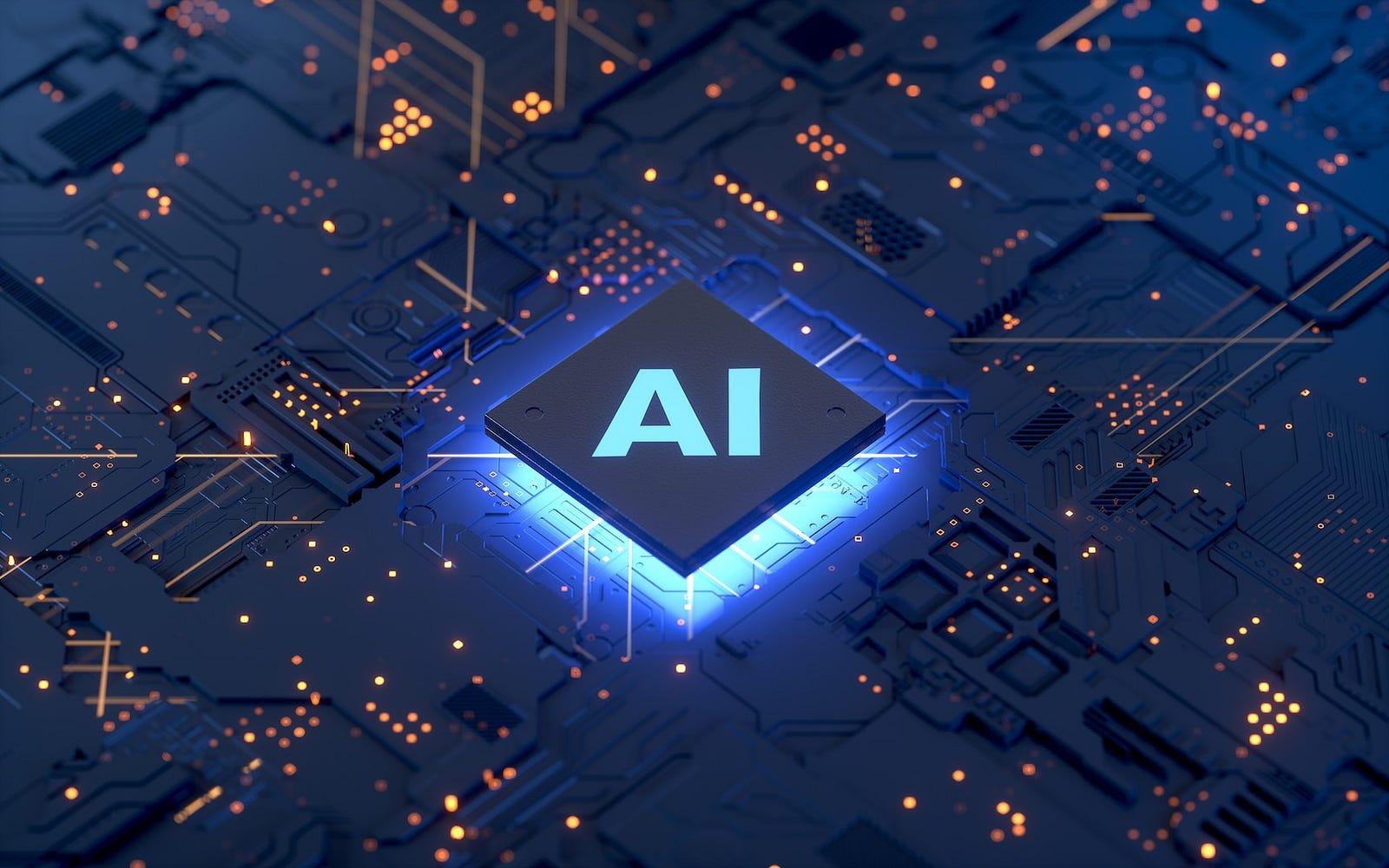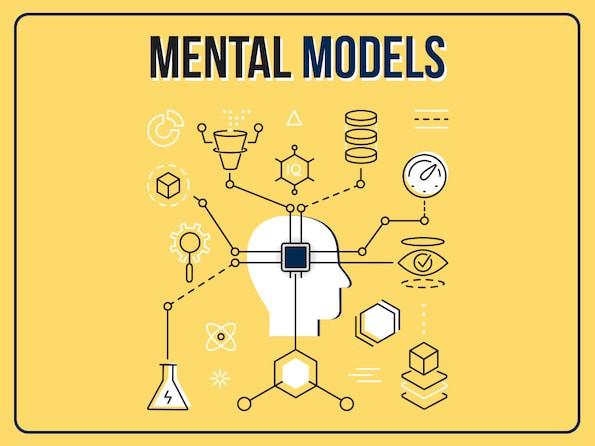Introduction: Why Responsible ML Is the New Hiring Standard in 2025
If 2023 was the year AI exploded into the mainstream, 2025 is the year AI accountability took center stage, not just in policy, but in hiring rooms across Silicon Valley.
For years, the machine learning job market revolved around technical mastery: model design, optimization, scalability, and data science precision. But as AI systems began influencing everything from credit decisions to healthcare diagnostics, the conversation shifted from “Can you build it?” to “Should you build it?”
Today, responsible ML practices are a hiring differentiator. Companies like Google, Microsoft, and Anthropic have restructured their interview processes to include “AI responsibility checkpoints.” These checkpoints assess how engineers approach bias, interpretability, fairness, and ethical risk mitigation in machine learning systems. In short, it’s not enough to train a performant model, you must show that you can train it safely, fairly, and transparently.
Why? Because the stakes are higher than ever.
AI-driven recommendations influence millions of people daily. Models misclassify, data drifts, and biases amplify silently until they make the headlines. For organizations handling vast user data, ethical blind spots are now technical liabilities.
This evolution means ML engineers are now evaluated not only on their algorithms but also on their ethical reasoning and governance mindset. Recruiters and technical interviewers are actively looking for signals that you can design systems responsibly, that you understand the social context, regulatory implications, and trade-offs embedded in your technical decisions.
At InterviewNode, we’ve observed a dramatic trend: engineers who articulate how they ensured fairness, validated transparency, or handled model accountability during past projects consistently outperform others in ML interviews. It’s the same shift we saw when DevOps transformed software engineering, now, “Responsible AI” is doing the same for ML.
As AI adoption accelerates, companies are embracing a new hiring mantra:
“We don’t just hire people who can build powerful models. We hire people who build trustworthy ones.”
In this blog, we’ll unpack exactly how companies now screen for responsible ML skills, what signals recruiters look for, the questions you can expect, and how to integrate ethics-driven reasoning naturally into your technical interview strategy.
Because in 2025, responsible ML isn’t a soft skill, it’s the new hard skill.
Section 1: The Rise of Responsible AI in Hiring
The shift toward responsible AI hiring didn’t happen overnight, it’s the result of years of public scrutiny, regulatory pressure, and internal reflection within tech giants.
By 2025, the world’s largest AI employers have realized that responsible machine learning isn’t just an ethical preference, it’s a business necessity.
a. The Regulatory Wake-Up Call
The 2024 rollout of the EU AI Act, the NIST AI Risk Management Framework in the U.S., and rising global data privacy standards have made one thing clear: AI accountability now has teeth.
These frameworks require organizations to prove that their AI systems are transparent, fair, and traceable.
That regulatory spotlight has reshaped hiring itself.
Companies no longer want engineers who simply “ship models.” They want builders who understand compliance, bias evaluation, and explainability.
At Google and Microsoft, for instance, responsible AI reviews are embedded into both product launches and performance evaluations. So when you interview for an ML role, interviewers aren’t just checking for TensorFlow mastery, they’re probing whether your design process can stand up to audit scrutiny.
b. Corporate Accountability Meets Technical Hiring
Following high-profile cases of model bias and data misuse, companies like Meta and Amazon have started hiring AI Ethics Engineers and Responsible ML Leads whose entire function is to ensure compliance across teams.
This trend has also trickled down into traditional ML roles. Engineers are now expected to integrate fairness testing, interpretability analysis, and privacy-preserving learning as part of their standard workflow.
Recruiters have adapted, too. Many now include a responsible AI screening stage, where candidates are asked questions such as:
“How would you detect demographic bias in a model?”
“How do you handle explainability when using black-box architectures?”
The aim isn’t to test moral philosophy, it’s to assess whether candidates think systemically and ethically about technology.
c. Responsible AI as a Competitive Edge
The most forward-thinking companies treat responsible AI hiring as a brand differentiator.
Firms like Anthropic, Hugging Face, and OpenAI openly highlight their safety-first culture. Candidates who can articulate their understanding of fairness, governance, or model accountability instantly stand out as long-term, risk-aware hires.
In other words, responsibility is the new specialization.
As explained in Interview Node’s guide “Quantifying Impact: How to Talk About Results in ML Interviews Like a Pro”, companies are no longer impressed by technical firepower alone, they’re hiring engineers who can prove that their impact is sustainable, transparent, and responsible.
Section 2: The Hidden Shift-From Accuracy to Accountability
For years, accuracy was the golden metric in ML hiring. Engineers who could squeeze a few extra percentage points of precision or recall out of a model were celebrated as top-tier candidates. But that era is ending.
In 2025, accuracy alone no longer wins interviews, accountability does.
a. Accuracy Without Accountability Is Risk
Imagine a sentiment analysis model that achieves 96% accuracy, but consistently misclassifies dialects from minority communities.
From a technical standpoint, it’s impressive.
From a real-world standpoint, it’s reputational and regulatory disaster.
This is why interviewers today ask, “Who does your model fail for?” rather than “What’s your model’s accuracy?”
Responsible AI hiring emphasizes accountability metrics, fairness, interpretability, reliability, and robustness, as much as performance metrics.
Candidates who discuss bias detection, explainability, or safe deployment practices immediately signal they understand ML’s social footprint, not just its statistical one.
b. From “Move Fast” to “Move Thoughtfully”
The traditional FAANG motto of “move fast and break things” has been replaced by “move thoughtfully and build trust.”
This mindset is visible in interviews across levels, from junior ML engineers to research scientists.
Instead of questions like:
“How would you optimize this model for accuracy?”
You’re now more likely to hear:
“How would you balance model accuracy with interpretability?”
“If improving fairness reduced accuracy, how would you handle that trade-off?”
Your response tells interviewers whether you approach ML as an isolated system, or as a socio-technical ecosystem that demands trade-offs and judgment.
c. Accountability as a Hiring Signal
Hiring committees now actively look for accountability signals during technical debriefs.
These include:
- Awareness of potential biases in data sources.
- Caution about deploying opaque models in high-stakes domains.
- Suggestions for human-in-the-loop validation or monitoring pipelines.
It’s not about moral preaching, it’s about risk literacy.
Companies want engineers who can detect, communicate, and mitigate AI risks before they scale.
As detailed in Interview Node’s guide “Behind the Scenes: How FAANG Interviewers Are Trained to Evaluate Candidates”, accountability has officially become a core evaluation pillar, alongside technical depth and collaboration.
You’re not just being judged on what you build, but how responsibly you build it.
Section 3: What “Responsible ML” Means in Interviews
Ask five engineers to define Responsible Machine Learning, and you’ll probably get five different answers.
For interviewers, however, “responsible ML” has a very specific meaning, it’s the balance between technical excellence and ethical foresight.
Responsible ML isn’t about being perfect. It’s about demonstrating that you understand the consequences of your models and make conscious, explainable decisions throughout the ML lifecycle.
In 2025, this understanding has become a core competency for ML roles, as critical as model design or data architecture.
a. The Four Dimensions of Responsible ML Evaluation
During interviews, companies like Google, Meta, and Anthropic often evaluate candidates across four dimensions when assessing responsible AI awareness:
- Fairness - How aware are you of potential biases in your data and model? Do you proactively test and mitigate them?
Example question: “How would you ensure your classifier isn’t biased against a specific demographic group?” - Interpretability - Can you explain your model’s predictions to stakeholders and non-technical users?
Example question: “How would you explain this deep model’s outputs to a product manager?” - Transparency - Do you document your model assumptions, limitations, and data lineage clearly?
Example question: “What would you include in a model card or AI report?” - Societal Impact - Can you reason about the broader ethical or societal implications of your work?
Example question: “What unintended harms could arise from deploying your model at scale?”
Interviewers don’t expect philosophical answers, they’re looking for evidence that you think about these factors before and after training.
b. Responsible ML in Action
Consider a fraud detection system:
- You might describe how you used re-sampling to balance classes, ensuring fairness across customer types.
- You could mention adding explainability tools like SHAP to visualize decision factors.
- You might note that you monitored false positive trends after deployment to maintain reliability.
Those three examples together tell a story of responsible engineering judgment.
c. How Responsible Thinking Scores in Interviews
At FAANG and top AI firms, “responsible ML thinking” has become a scorable category during interview debriefs.
Hiring panels often label it under “strategic decision-making,” “judgment,” or “risk awareness.”
That means articulating these elements boosts your evaluation across multiple dimensions, technical depth, communication, and leadership potential.
As pointed in Interview Node’s guide “Soft Skills Matter: Ace 2025 Interviews with Human Touch”, responsible ML isn’t just about ethics, it’s about empathy and communication.
Interviewers want to see that you understand your model’s human impact as much as its mathematical one.
Section 4: How Companies Assess Responsible AI Skills
When companies say they’re screening for “Responsible AI,” they don’t just mean an extra checkbox on a compliance form, they’ve built structured evaluation mechanisms into their hiring pipelines.
By 2025, nearly every major tech employer, from FAANG to frontier labs like OpenAI and Anthropic, has integrated responsible ML assessment into interviews. But how exactly do they test for something as nuanced as ethics, fairness, or model accountability?
Let’s break it down.
a. Behavioral Questions That Reveal Ethical Judgment
Most companies start with behavioral or situational questions designed to assess your moral reasoning under technical constraints.
These aren’t trick questions, they test how you balance real-world trade-offs.
Common examples include:
- “Tell me about a time when your model behaved unexpectedly. How did you handle it?”
- “Describe a situation where data limitations introduced bias. What steps did you take?”
- “Have you ever had to push back on deploying an ML model? Why?”
What interviewers are listening for:
- Whether you recognized the issue early.
- Whether you escalated responsibly or fixed it technically.
- And whether your decision reflected awareness of broader consequences.
Even if you haven’t faced these exact scenarios, showing a thoughtful framework, identifying risks, validating assumptions, and communicating transparently, is a strong positive signal.
b. Technical Scenarios That Test Fairness and Interpretability
Many companies now include mini-scenarios where they ask you to reason about fairness or explainability directly.
For example:
“You’re training a model on imbalanced medical data, how would you evaluate fairness across subgroups?”
“How would you interpret a black-box recommendation model for compliance review?”
These questions aren’t about memorization. They measure how systemically you think, whether you consider auditing tools, visualization techniques, and governance mechanisms like model cards or fairness dashboards.
Mentioning tools such as SHAP, LIME, Fairlearn, or internal monitoring pipelines is a plus, but only if you explain why you’d use them.
c. Responsible AI as a Culture Fit Signal
In top AI firms, hiring isn’t just about skills, it’s about alignment.
Recruiters often evaluate how your values align with the company’s AI principles.
At Google, for instance, candidates are expected to embody the company’s AI Principles (fairness, privacy, accountability). At OpenAI, interviewers might assess how your responses reflect AI safety mindfulness.
Demonstrating that you understand why these principles exist, and how they apply practically, shows that you’re not just technically sharp but culturally compatible.
As noted in Interview Node’s guide “Behind the Scenes: How FAANG Interviewers Are Trained to Evaluate Candidates”, responsible AI discussions have become a formal scoring dimension under “judgment” and “impact reasoning.”
Your answers here can make the difference between a “hire” and a “strong no-hire.”
Section 5: The New Interview Rubrics-Scoring Accountability Like a Skill
One of the most significant yet least discussed changes in AI hiring over the last two years has been the introduction of responsible AI rubrics, structured frameworks that help interviewers assess ethical and social awareness alongside technical skill.
Companies like Google, Amazon, and Anthropic now evaluate candidates on how responsibly they think about their models, not just how efficiently they build them.
In short, accountability is now scorable.
a. How the New Rubrics Work
Traditional ML interview rubrics focused on metrics like:
- Problem-solving ability
- Technical depth
- Coding efficiency
- Communication clarity
Now, many technical interview debriefs include an additional signal: “Responsible AI reasoning.”
Here’s what that category includes:
- Bias Awareness: Did the candidate identify or discuss potential data/model bias?
- Interpretability: Could they explain how their model’s outputs can be understood or audited?
- Risk Awareness: Did they mention model misuse, ethical implications, or user harm scenarios?
- Transparency Practices: Did they discuss documentation or model cards?
Each element is scored based on observable behaviors, mentioning bias is one thing; describing mitigation strategies is another.
For instance, a candidate who says,
“We used diverse datasets to reduce bias,”
earns some credit,
but someone who adds,
“We evaluated demographic parity and implemented re-weighting,”
earns full marks.
b. What Interviewers Are Trained to Look For
At FAANG and top-tier AI labs, interviewers are explicitly trained to identify “ethical maturity signals.”
These include:
- Framing trade-offs clearly (“We prioritized recall over precision due to user safety.”)
- Escalating responsibly when detecting bias or data issues.
- Suggesting monitoring or explainability enhancements post-deployment.
Candidates who do this naturally, without being prompted, tend to stand out in final debriefs.
c. How These Rubrics Affect Offers
These new rubrics often become tie-breakers between two technically equal candidates.
In a world where every ML engineer can code a CNN or fine-tune an LLM, responsible reasoning becomes the differentiator.
And because AI regulations now demand audit trails and fairness verification, hiring engineers who already understand responsible ML drastically reduces compliance risk, making you a low-risk, high-value hire.
As highlighted in Interview Node’s guide “The Rise of ML Infrastructure Roles: What They Are and How to Prepare”, ML roles are evolving into systems-level engineering disciplines, blending performance, safety, and governance.
Understanding these rubrics prepares you to excel in this new landscape of ethical, scalable, and accountable AI.
Section 6: How to Showcase a Responsible AI Mindset
Knowing that companies screen for responsible ML practices is one thing, but demonstrating it effectively in an interview is another.
Many candidates struggle here. They either sound overly theoretical (“bias is bad, fairness is good”) or overly technical (“we reweighted loss functions to reduce class imbalance”).
The key to standing out is to integrate ethical awareness naturally into your technical storytelling, showing that responsibility is part of your engineering DNA, not an afterthought.
a. Frame Responsibility as Ownership
When discussing past projects, emphasize not only what you built, but how you owned the consequences of what you built.
For example, instead of saying:
“I developed a recommendation model for user personalization,”
say:
“I developed a recommendation model that included fairness constraints to avoid reinforcing popularity bias, ensuring niche creators had equal visibility.”
That single sentence tells interviewers you think beyond performance, you think in systems of people, behavior, and ethics.
b. Incorporate Responsible Design into STAR Stories
Most behavioral ML interviews use the STAR framework (Situation, Task, Action, Result).
To stand out, add one more element, Reflection:
- Situation: “We built a credit scoring model using third-party data.”
- Task: “Identify key predictors and improve default detection.”
- Action: “We discovered socioeconomic bias in features and replaced them with proxy-free variables.”
- Result: “Accuracy improved 5%, and fairness metrics across demographics equalized.”
- Reflection: “It taught me that data preprocessing has deeper ethical consequences than model choice.”
This approach turns a technical example into a responsible engineering narrative.
c. Use Metrics That Reflect Fairness and Transparency
When presenting your results, don’t just highlight performance metrics, mention fairness or interpretability metrics like:
- Demographic parity difference
- Equalized odds
- Model explanation coverage (via SHAP or LIME)
Doing so signals fluency in modern responsible ML evaluation frameworks.
d. Show Proactive Governance Awareness
If you’ve ever documented your model (e.g., model cards, data sheets) or participated in post-launch monitoring, mention it.
Interviewers value candidates who take governance seriously, even when not asked to.
As explained in Interview Node’s guide “Soft Skills Matter: Ace 2025 Interviews with Human Touch”, empathy-driven communication is one of the strongest predictors of interview success.
By pairing technical rigor with ethical reflection, you position yourself as the kind of ML engineer every responsible AI team wants.
Section 7: Mistakes Candidates Make
Even as responsible AI becomes a hiring priority, most ML candidates still fail to communicate responsibility effectively during interviews. They might have the technical competence, but miss the behavioral, linguistic, and ethical cues interviewers are actively trained to detect.
Let’s look at the most common pitfalls that cost strong candidates offers, and how to avoid them.
a. Treating Responsible AI as an Afterthought
Many candidates treat responsible AI like an optional appendix to their technical story.
They mention bias or fairness at the end, if at all.
This is a red flag. In today’s interviews, ethical reasoning must be woven throughout your responses.
For example, when describing data preprocessing, mention how you handled sensitive attributes or mitigated sampling bias. When discussing model selection, include interpretability considerations.
Integrating responsibility naturally shows that it’s part of your engineering instinct, not performative awareness.
b. Over-Theorizing Without Practical Application
Some candidates talk about responsible AI in abstract terms, “ethics,” “fairness,” “bias”, but can’t translate those into actions.
Interviewers are listening for applied reasoning:
“We used stratified sampling to balance the dataset,”
“We monitored prediction drift to ensure consistency,”
“We documented trade-offs in our model card.”
These statements reflect doing, not just knowing.
Remember: Responsible AI is a practice, not a philosophy.
c. Ignoring Trade-Offs
Another common mistake: claiming perfect fairness or no bias.
Interviewers don’t expect utopia, they expect awareness of trade-offs.
A balanced response might be:
“We reduced bias between groups by 20%, but accepted a 2% accuracy drop to improve fairness.”
This shows judgment, realism, and honesty, all key hiring signals.
d. Being Defensive or Uncomfortable Discussing Ethics
Some candidates tense up when ethical questions arise, assuming they’re political or moral traps. They’re not.
They’re designed to test empathy and composure under uncertainty.
Instead of rushing to justify, pause, acknowledge the complexity, and reason calmly.
“That’s a nuanced issue, I’d start by auditing the data and consulting with product stakeholders before proceeding.”
That’s a confident, collaborative, responsible answer.
e. Failing to Link Responsibility to Business Value
Responsible AI isn’t just about compliance, it’s a competitive advantage.
Explain how fairness or interpretability builds user trust, reduces churn, or avoids costly model failures.
This makes your reasoning sound strategic, not moralistic.
As highlighted in Interview Node’s guide “Why Software Engineers Keep Failing FAANG Interviews”, interviews aren’t intelligence tests, they’re judgment tests.
The smartest candidates don’t just talk about what they know, they show how responsibly they think.
Section 8: The Future-Responsible AI as a Core Engineer Skill
A few years ago, understanding responsible AI was seen as “nice to have”, something reserved for policy experts, ethicists, or senior researchers. But in 2025 and beyond, it’s becoming a baseline requirement for every ML engineer.
This evolution mirrors earlier transformations in tech. Just as DevOps redefined software delivery and security engineering redefined risk management, Responsible AI is redefining ML engineering itself.
a. The Convergence of Ethics and Engineering
As AI systems power critical decisions, from medical diagnostics to credit approvals, companies can no longer separate ethics from execution.
That means tomorrow’s engineers will need hybrid fluency: they must think like scientists and policy-aware technologists.
Recruiters at leading companies are already labeling this as “AI Governance Fluency.”
In practical terms, that means:
- Understanding regulatory frameworks like the EU AI Act or NIST RMF.
- Knowing how to build explainable, auditable, and bias-tested ML pipelines.
- Communicating model risk to cross-functional teams with clarity and confidence.
In other words, responsibility isn’t a checkbox, it’s an engineering discipline.
b. How This Will Shape Future Hiring
By 2026, expect to see:
- Responsible ML rounds becoming standard in technical interviews.
- Dedicated “AI governance” roles emerging alongside data scientists and ML engineers.
- Performance reviews tied to model accountability metrics (bias detection, fairness audits, etc.).
Top AI firms already incorporate “model safety and ethics” into job descriptions. What began as a niche requirement is now as fundamental as TensorFlow or PyTorch proficiency.
Candidates who can talk confidently about model governance, and demonstrate it through real projects, will find themselves on the fast track to leadership.
c. From Compliance to Competitive Advantage
Forward-thinking companies have realized that Responsible AI isn’t just about risk mitigation, it’s about brand trust and innovation.
Models that are fair, transparent, and explainable build user confidence and long-term loyalty.
And engineers who internalize this philosophy create a powerful hiring signal: they design for humans, not just machines.
As explained in Interview Node’s guide “The Rise of ML Infrastructure Roles: What They Are and How to Prepare”, the future of ML lies in engineers who can build scalable systems that are not only fast, but accountable, governable, and human-centered.
Responsible AI is no longer a niche skill.
It’s the new language of leadership in machine learning.
Section 9: Conclusion-The Era of Responsible AI Talent
The new era of AI hiring isn’t about who can train the largest model or fine-tune the latest LLM, it’s about who can do it responsibly.
Companies have learned that technical brilliance without accountability is a risk multiplier. In contrast, engineers who think about fairness, interpretability, and governance bring trust and long-term value to every system they design.
In 2025, interviewers no longer ask, “Can you build it?”
They ask, “Should you build it?” and “How will you ensure it’s fair?”
That’s why the strongest candidates weave responsible AI thinking into every phase of their story, from data curation to post-deployment monitoring. They show awareness of trade-offs, acknowledge uncertainty, and demonstrate curiosity about impact.
These signals, once considered soft, are now core hiring criteria.
Engineers who can articulate ethical reasoning confidently often outperform more technically advanced peers. Because in the age of AI regulation and public scrutiny, judgment is the ultimate skill.
Responsible AI isn’t a trend. It’s the foundation of trustworthy innovation, and the engineers who embrace it will lead the next decade of machine learning.
“The best ML engineers of the future won’t just optimize for accuracy, they’ll optimize for accountability.”
As hiring evolves, your ability to think, build, and communicate responsibly will define not only your job offers but also your long-term influence in AI.
Frequently Asked Questions (FAQs)
1. Why are companies emphasizing Responsible AI in hiring now?
Because AI is no longer experimental, it’s operational. Governments and users are demanding accountability, so companies are hiring engineers who can design compliant, fair, and explainable systems from the start. It’s risk management, brand protection, and innovation all in one.
2. What exactly does “Responsible ML” mean in interviews?
It means showing ethical and operational awareness throughout your workflow, thinking critically about data bias, model explainability, privacy, and the human consequences of your designs. It’s less about moral philosophy and more about measurable accountability.
3. Do FAANG companies really assess ethical awareness?
Yes, FAANG and frontier AI labs (Anthropic, OpenAI, DeepMind) now include responsible AI checkpoints in their interviews. You might be asked how you’d detect bias, explain a model to regulators, or prevent data misuse.
4. What are common interview questions on Responsible AI?
Expect variations of:
- “How would you detect and reduce bias in your dataset?”
- “How do you explain a black-box model to non-technical stakeholders?”
- “What ethical risks would you consider before deployment?”
They’re evaluating your reasoning, not memorization.
5. How can I demonstrate responsible AI experience if I’m early in my career?
Include projects that show fairness testing, interpretability, or privacy awareness, even simple experiments. Document your process transparently and discuss ethical trade-offs you faced. Responsibility scales with intent, not experience.
6. Are there technical tools that help show Responsible ML awareness?
Yes, use frameworks like Fairlearn, AIF360, SHAP, or LIME. But tools only matter when tied to reasoning: explain why you chose them and how they improved fairness or transparency.
7. Can Responsible AI discussions appear in behavioral interviews?
Absolutely. Behavioral rounds often assess judgment under ambiguity. Mention how you handled ethical dilemmas, communicated risks, or delayed deployment for validation. These stories signal maturity and integrity.
8. How can I prepare for Responsible AI discussions?
Review your past projects and identify moments where you:
- Questioned data quality or bias.
- Made interpretability or compliance trade-offs.
- Communicated risks to non-technical stakeholders.
Then rehearse concise ways to explain these in STAR format.
9. What’s the biggest mistake candidates make?
Treating Responsible AI as “extra credit.” In 2025, it’s table stakes. Companies want engineers who bake responsibility into their work, not sprinkle it on at the end.
10. How do I make Responsible AI a career advantage?
Frame it as leadership, not limitation. Engineers who design ethically gain trust faster, move into governance or lead roles sooner, and shape how teams build intelligent systems responsibly.
Responsible AI isn’t slowing innovation, it’s sustaining it.






